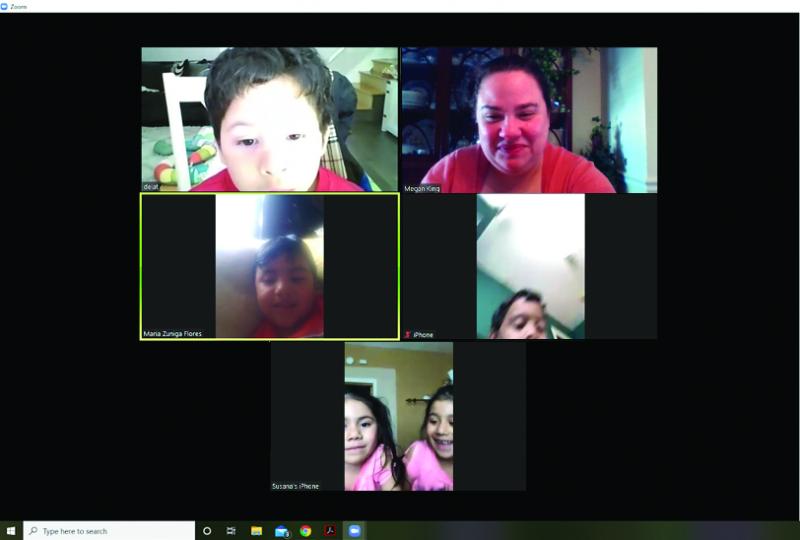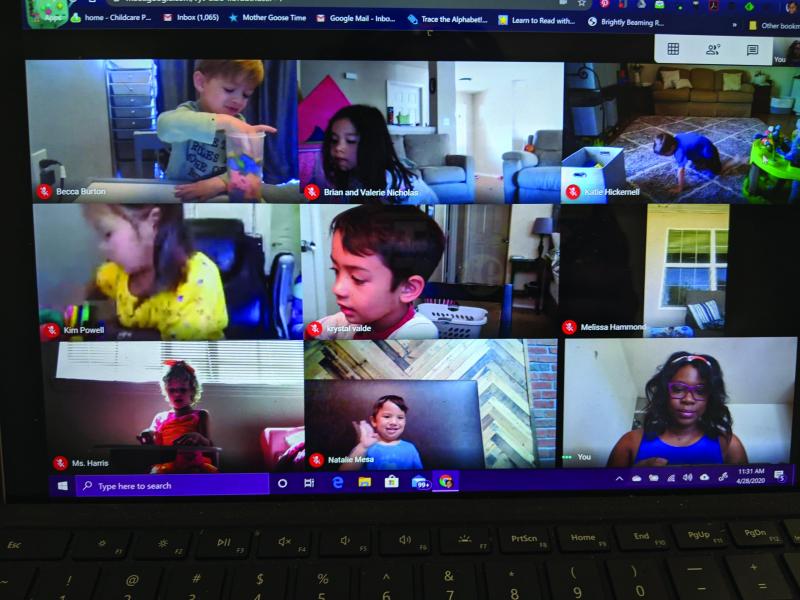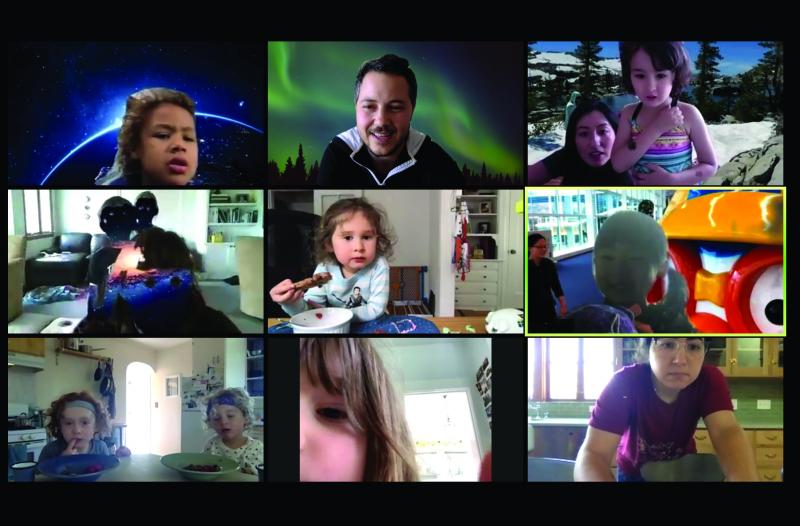Feature Teachers
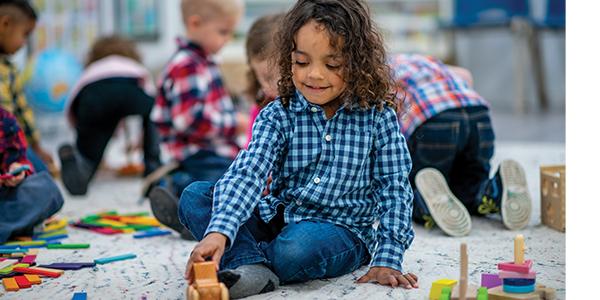
You are here
Adjusting to the New "Normal"
We are creating this August/September issue of TYC in late spring, while most preschools in the United States are closed. Typically, this TYC issue focuses on back-to-school topics, but this is not a typical time.
In the first section of this issue, we hear from educators about their thinking, emotions, and responsive actions during the COVID-19 pandemic. These thoughtful educators have shown resilience, patience, and empathy as they have also faced uncertainty. They have called upon their experiences as educators as they work to offer engaging, playful learning opportunities and maintain relationships while physically away from school.
The four feature teachers in this issue have each encountered successes and have faced challenges as they transitioned—with some trial and error—to virtual teaching and learning. They have worked to individualize their instruction, to accept the many ways children participate in virtual class time, and to support play at home and across developmental domains. As we expect you do as well, they have all missed interacting with their students and have been anxious to welcome children and families back as soon as possible.
In addition to these feature teachers, we offer a letter written by preschool teacher Kelly Fox to the children in her classroom. She is honest about her own “big emotions” and acknowledges children’s and family members’ big emotions as well. She provides reassurance that these emotions are okay, along with a reminder of the importance of self-care and how resilient they all are.
In "The Importance of Flexibility and Family Engagement Connecting Virtually with Preschoolers", Cheryl A. Paul describes how virtual teaching with preschoolers isn't possible without family involvement. She also shares her perspective on the limits of virtual teaching: children are missing opportunities for social and emotional learning, and teachers cannot appropriately assess children's play and learning without authentic documentation and observation.
As we all reflect on how much teachers can do virtually, we also want to acknowledge, like all of the teachers in this issue do, the important ways the full spectrum of preschool simply cannot happen virtually. This issue includes other articles about promising in-school learning to guide us when school is back in session.
—TYC Editorial Team
Four Teachers Share Their Experiences Teaching this Spring
Nadia Jabonetaisis a preschool teacher and program coordinator at Pacific Primary, in San Francisco. She has been in the field for over 20 years and has worked with children ranging in age from 6 months to 6 years
Megan Kingteaches at Passaic Public Schools, in Passaic, New Jersey, a large Title I urban public school district that serves many Spanish speaking families. She has been working in preschool for 15 years.
Tessie Raganteaches at Perfect Start Learning, a family child care preschool/pre-K program in California. She has been in the education field for 14 years and has run her own program for eight years.
Encian Pastel teaches at Children's Community Center, a parent–teacher cooperative preschool, in Berkeley, California. He has been teaching for eight years and has worked with children of all ages in community settings for 12 years.
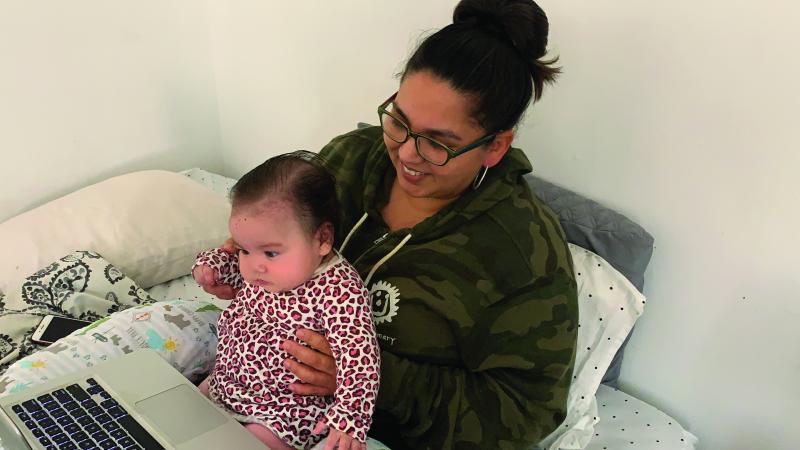 Nadia Jaboneta
Nadia Jaboneta
My teaching experience this spring: Facilitating virtual meetings with preschoolers was something completely new to me—I never would have imagined that I would be conducting virtual circle times five days a week. I really enjoy seeing the children daily, and some grown-ups too! It has been important to work as a team of teachers and to learn together what works best for this new format. We have been most successful in singing songs, playing games, reading books, transcribing children’s words, and facilitating show-and-tell.
My hopes for back-to-school: During a recent circle time, I asked the children a question: “What is something you want to do together when we get back to school?” My intention was to reflect with the children about our relationships and the good times we have had together—and will continue to have in the future. My hope is that we can spend a lot of time reconnecting with each other. I plan to provide a safe and supportive space for expressing our feelings about the pandemic and thinking about how we can move forward as a community.
Ways I’ve encouraged play-based learning and the valuing of relationships while schools have been closed: My goal, as shelter-in-place continues, is to plan circle times that are meaningful and engaging and that help normalize children’s time with their teachers as much as possible. We email a weekly newsletter to families with ideas for supporting play at home. We have highlighted some important things to include, as much as possible, in each child’s day:
- Time for snuggles
- Some rough and tumble play
- Reading favorite books and/or telling favorite stories
- Lots of time for open play
- Getting some fresh air
- Having long chats to check in on how everyone is feeling
We have emphasized this message to families: “None of us have lived through a pandemic before. Whatever you are doing is great and it is enough!”
Do you have a favorite children’s book to read virtually? Read alouds are one of the tools we’ve been using to help children process their feelings about the coronavirus. Reading When I Feel Scared, by Cornelia Maude Spelman, inspired the children to express how they are feeling during this pandemic. When asked, “What is something you want to do together when we get back to school?,” the children had many great responses, including:
“Make puppets and puppet shows!”
“Garden time!”
“Go on the monkey bars!”
“Build a magna tiles tower all the way to the ceiling!”
“Eat lunch together!”
“Dig a big big hole in the sand!”
|
Nadia Jaboneta
|
Megan King
|
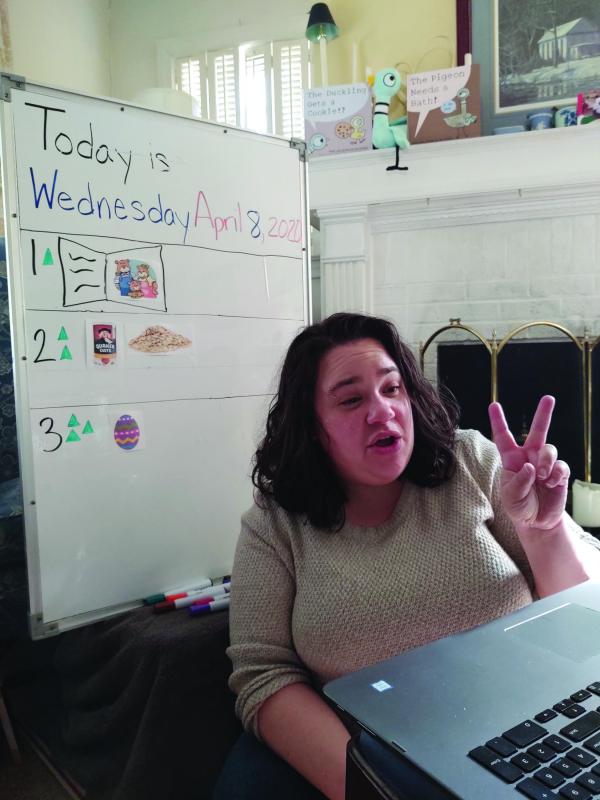 Megan King
Megan King
My teaching experience this spring: My district has been providing families with a list (organized by developmental skill) of interactive activities for each day, in 15-day intervals. I take four to six of these activities and send them to families daily through the Remind app. I choose one or two of these activities and ask children for a photo of their work or of them engaging in the activity. I also try to include information for families about what to expect. For example, if I see in a photo that a child is making a simple pattern, I will ask the parent to encourage their child to make more patterns using other materials or to create a complex pattern.
Finally, I choose one activity, developmental area, or concept to engage in through a virtual meeting with the children. (I made a choice to be accessible and available for individual and smaller group video calls to accommodate families’ schedules.) Seeing the children’s faces and being able to talk with them has boosted everyone’s well-being. When I have a virtual meeting with the children, I try to engage them in a variety of activities. I start with songs and games they are already familiar with and gradually incorporate some new ones.
One of our daily activities asked children to create a pattern with forks and spoons, and during the video call, we made a pattern together using forks and spoons. I have also shared my screen, and as a group we view animal webcams, such as an eagle’s nest or zoo habitats.
My hopes for back-to-school: That enough progress has been made in controlling the spread of the disease and an effective treatment protocol is found so we can return to the classroom in September. I hope that my students and their families are minimally impacted by this disease. I hope that, when we do return to the classroom, we are able to quickly find the joy in learning together again and that I have enough knowledge of trauma-informed practices to help children transition back to school. I am hopeful that there will be a widespread focus on social and emotional health and helping children of all ages reacclimate.
Ways I’ve encouraged play-based learning and the valuing of relationships while schools have been closed: The daily activities that I suggest are centered around open-ended experiences and encourage exploration. In every message I send, I remind families that I am available to support them. I make sure to speak with each family on the phone at least once a week to check in. I also try to build each day’s activities around a theme or idea. For example, on a nice day, I provided activities related to taking a walk: collecting, counting, and sorting rocks and examining and talking about each rock at the end of the walk. I am grateful for the trust-filled relationships I had built with families prior to school closing. These relationships have enabled them to feel safe in sharing their concerns, worries, and joys with me along the way.
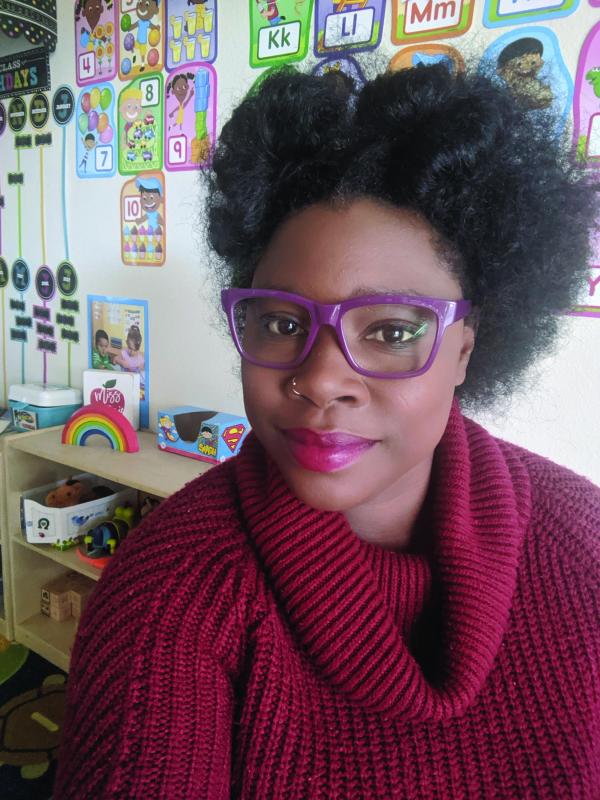 Tessie Ragan
Tessie Ragan
My teaching experience this spring: As I thought about how to connect with and support the children in my program virtually, I started to think creatively about what would work in this new “normal.” At first, I uploaded videos to my YouTube channel with daily circle time activities, such as dancing together and art projects. But, as educators, we must be adaptable if we want to help children and families in our programs navigate this new territory. One child in particular was missing coming to school every day, so I came up with more ways for us to interact in real time.
For example, I began offering live, virtual experiences with Ms. Tessie twice a week. This includes circle time, dance, new concepts, story time, math/numbers, yoga, summary, and goodbye. I make sure to have a largely active, engaged group—children ask me questions, and I am able to hear what they are interested in and adapt it to what I bring to each session. I also share my screen: for example, when reading a magazine or introducing letter sounds. We use hands-on materials that I know are available at home, such as play dough and counters, so the children can practice skills along with me. Finally, I set up individual time with each child once a week. I spend 15 minutes working with each child one-on-one to continue to build their skills and to introduce them to new knowledge.
Ways I’ve encouraged play-based learning and the valuing of relationships while schools have been closed: I send home preschool bags for the children that contain materials and directions for art projects. I make sure families understand that the purpose is not for the project to look like the example; it's for their child to enjoy using new materials in open-ended ways and to create their own art. I also offer them outdoor explorations through the Seesaw app. For example, we are using the app to track caterpillars together. Each child monitors a caterpillar at home and uses the app to log changes they see. Later on, we will release the caterpillars together during a remote outdoor session! But most important, I make sure families and children know that I am here for them to text, email, or call if they need ideas and to support them through this time. Just because I do not see them in person every day does not mean I think my job of educating and caring for their child is over.
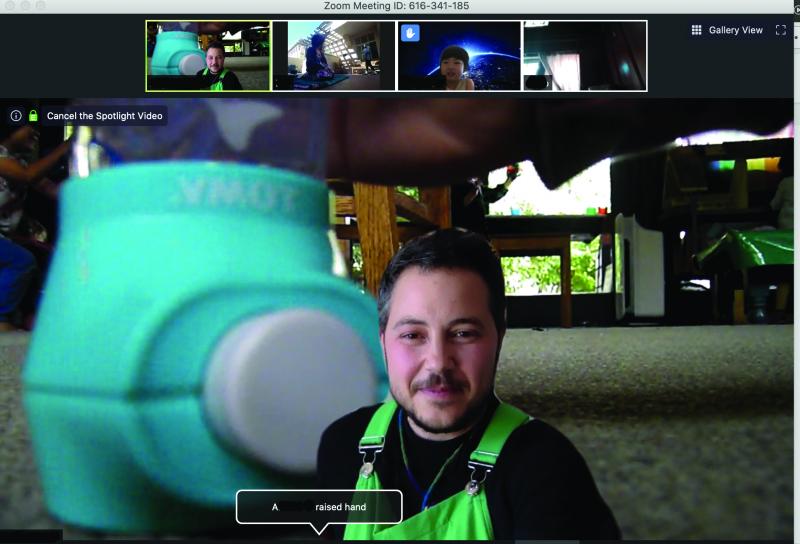 Encian Pastel
Encian Pastel
My teaching experience this spring: Early on, we asked families about their schedules and offered a range of times to meet their needs. We have been clear as we communicate with families that they should only participate when their schedules allow. It was a very strange transition to go from being a screen-free school to teachers using screens. We are screen-free because we value playful experiences and interactions, and as much as possible, we have woven these into the experiences we offer virtually. All in all, teachers have been surprised that our virtual meeting times work as well as they do. A few things that have helped:
- Flexibility in how children participate: children can participate in the group in more ways than when we’re at school and that fit with their home environments. Children participate while drawing, while playing with LEGOs or tinkering with other materials, while sitting upside-down on their couch, while rolling around on the floor, while taking breaks to run around the house, while making sounds (that we can easily mute if needed), and generally while entering and leaving at will.
- Flexibility in how children share: while activities involving simultaneous speaking and listening have been challenging, using a combination of mute all/unmute/spotlight features works great (for example, while I tell a story or facilitate conversations between children).
- Simultaneous participation for anything visual: I’ve had success leading finger plays, yoga poses, songs requiring movement, and more with everyone moving together.
Ways I’ve encouraged play-based learning and the valuing of relationships while schools have been closed: Families at my school created a mutual aid spreadsheet and a phone tree. Teachers are also providing times for virtual meetings for parent support groups and for children’s peer interactions.
We’ve also structured our day to make small groups possible and to create special virtual meeting times for children who are not doing well in the large group. One teacher tried leading a “Creative Time” virtual session, where children were prompted to work on a creative project of any kind, and they could chat with each other while doing so. Teachers found that this format closely replicated what occurs in person during free play time.
|
Tessie Ragan
|
Encian Pastel
|
Photographs: courtesy of authors
Many thanks to the teachers who submitted content to this issue. We want to feature more teacher voices from around the country. If you’re interested in contributing to TYC, submit your content to [email protected].

